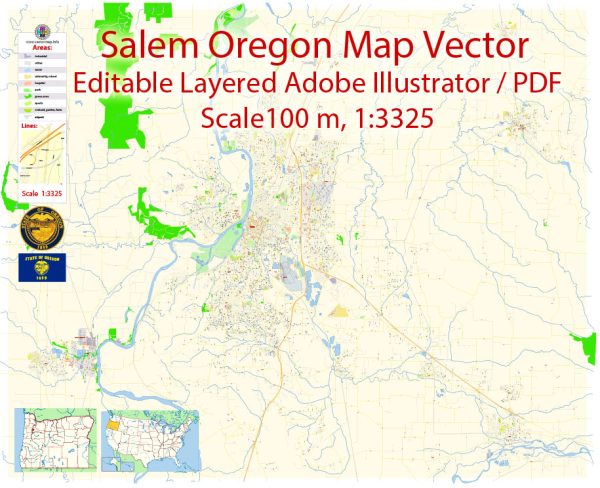Salem, the capital city of Oregon, has a rich history of urban development that spans back to the mid-19th century. Here’s an overview of the key historical developments in Salem’s urban growth:
- Founding and Early Settlement (1840s-1850s):
- Salem was founded in 1842 by Jason Lee, a Methodist missionary, as a mission for the Native Americans. The city’s name is derived from the Hebrew word “Shalom,” meaning peace.
- In 1851, Salem was chosen as the capital of the Oregon Territory, contributing to its early growth and development.
- Statehood and Expansion (1859-1900):
- Oregon achieved statehood in 1859, and Salem continued to flourish as the state capital.
- The arrival of the railroad in the late 19th century further stimulated economic development and population growth in Salem.
- Government and Institutions:
- The establishment of government institutions, including the Oregon State Capitol, played a significant role in shaping Salem’s urban landscape.
- The Capitol building, constructed in phases during the late 19th and early 20th centuries, stands as a symbol of the city’s political and administrative importance.
- Economic Diversification (1900-1950):
- Salem’s economy diversified in the early 20th century, with industries such as agriculture, lumber, and manufacturing contributing to its growth.
- The city saw the expansion of its infrastructure, including roads and utilities, during this period.
- Post-War Era and Suburbanization (1950s-1970s):
- Like many American cities, Salem experienced suburbanization in the post-war era. This led to the development of suburban neighborhoods and a shift away from the city center.
- The construction of the Interstate 5 freeway in the 1960s facilitated easier transportation and influenced the city’s growth patterns.
- Urban Renewal (1960s-1980s):
- Salem, like many cities across the United States, underwent urban renewal initiatives in the mid-20th century. This involved redevelopment projects aimed at revitalizing downtown areas.
- The renovation of historic buildings, creation of parks, and other urban improvement projects were part of these efforts.
- Contemporary Urban Development (1990s-Present):
- Salem has continued to evolve in recent decades, with ongoing efforts to balance economic development, preservation of historic sites, and community enhancement.
- The downtown area has seen revitalization, including the establishment of cultural and recreational amenities.
- Cultural and Recreational Amenities:
- Salem has developed cultural institutions such as museums, theaters, and parks, contributing to the city’s overall quality of life.
Understanding Salem’s history of urban development provides insight into the factors that have shaped its current landscape, blending historic charm with modern amenities.


 Author: Kirill Shrayber, Ph.D.
Author: Kirill Shrayber, Ph.D.